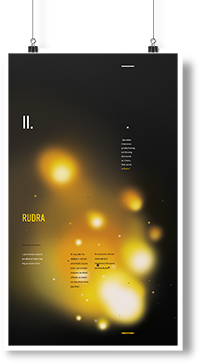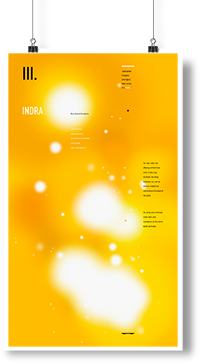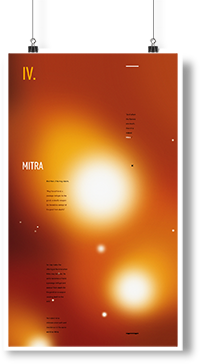
The fire: primordial and divine
energy tamed by man,
ignited, he comes to life, consumes
and consumes himself, breaths
feeding himself of matter
that permits his existence.
Inspired by:
Kāṇvaśatapathabrāhmaṇam
Uddhāri Khāṇḍā
BRĀHMAṆA I
Agni. The God-Fire, first born of Prajapati, father of all beings.
The hindu Theogony offers us the picture of this entity which dwells in Prajapati's mouth and escapes in the instant when the Ghee is mentioned (the clarified butter used in the offers) of which Agni is greedy; a river of fire flows, overwhelming and devouring everything it meets.
CONCEPT
An interpretation of the five phases associated to the birth and developing of the fire in the rituality during the Agnihotra (fire sacrifice) in the Brahmanic tradition.
Phases that in an universal analogy follow such systems that, after an initial perturbation event and a central climax, are back to balance.
This archetypical entities keeps their nature of singular divinities, but they are projected in an ideal space, becoming frames of moments in the continuous flow, toward the resolve of an imbalanced system.
Phases that in an universal analogy follow such systems that, after an initial perturbation event and a central climax, are back to balance.
This archetypical entities keeps their nature of singular divinities, but they are projected in an ideal space, becoming frames of moments in the continuous flow, toward the resolve of an imbalanced system.
The blur is a semantic oxymoron: the fire not in focus. Overlapped to it there is a symbolic reading scheme, three elements that complete the scenery, the altar, the sky and a cursor, point of tension between sky and earth, metaphor of the offer that once burned, rises toward its destination, abode of the deity. Reached the vertex, it glides slowly to the center finding the balance between divine and earthly condition.









